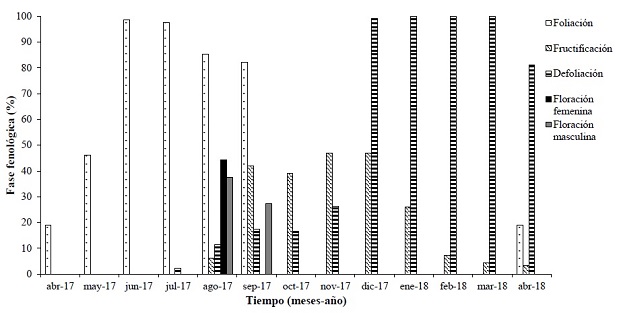Population structure and phenology of cuachalalate (Amphipterygium adstringens) developed on degraded lithosol in the coast of Oaxaca
DOI:
https://doi.org/10.28940/terra.v41i0.1595Keywords:
growth stages, aggregate distribution, phenogram, hydrophobicity, edaphic transitionAbstract
Amphipterigyum adstringens “cuachalalate” is growing on degraded soils of the low deciduous forest of the coast of Oaxaca. Two objectives were carried out: 1. On cuachalalate: to define the vertical and horizontal population structure, to identify the dispersal pattern of the individuals, and observe the period of the phenological phases. 2. On the soil: to determinate the physical and chemical characteristics of the degraded Lithosol of San Pedro Mixtepec, Oaxaca, where cuachalalate is growing. In sites of 1000 m2 all cuachalalate individuals were registered. These were classified by growing stage (saplings, juveniles and trees). To analyze the size hierarchy, the horizontal and vertical structure of the cuachalalate populations was analyzed. The spatial dispersion of populations was estimated with the Morisita Index. Phenological events were recorded in the trees: foliation, female and male flowering, fruiting and defoliation, during one year (2017 rainy season to 2018 dry season). The cuachalalate presented lower (2.0 to 9.5 m) and upper (10.0 to 16.0 m) vertical structure; the horizontal structure showed that saplings and juveniles have diameters < 2.5 cm, and trees of 5 to 10 cm. The spatial distribution of the populations is aggregated. Flowering occurred during the rainy season, fruiting during rainy to dry season of next year, foliation from dry to rainy season of the same year and defoliation from rainy season to dry season of next year. Degraded lithosols tend to be eroded by runof f, are impermeable and hydrophobic. The piedmont soils have physical and chemical characteristics that highlight incipient accumulation processes, which anticipate a transition to an eutrophic regosol, a favorable soil for the persistence of the low deciduous forest.
Downloads
Publication Facts
Reviewer profiles N/A
Author statements
- Academic society
- Terra Latinoamericana
- Publisher
- Mexican Society of Soil Science, C.A.

















